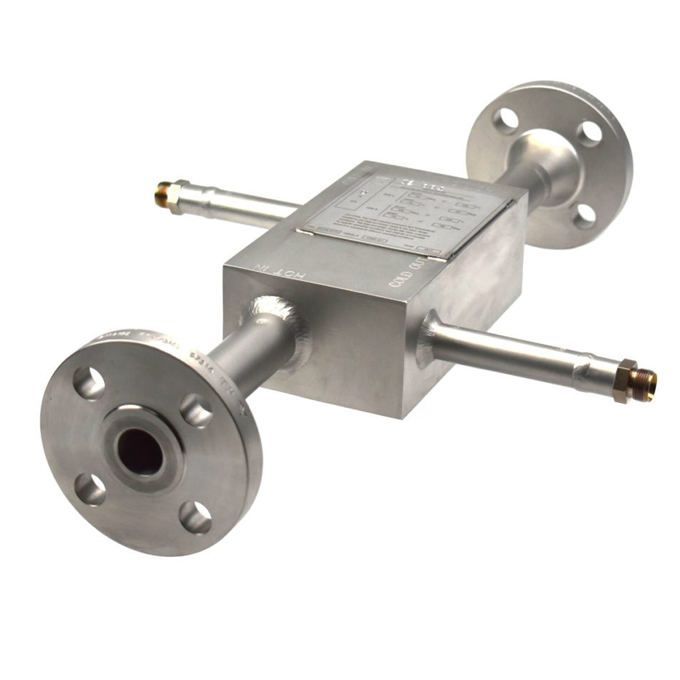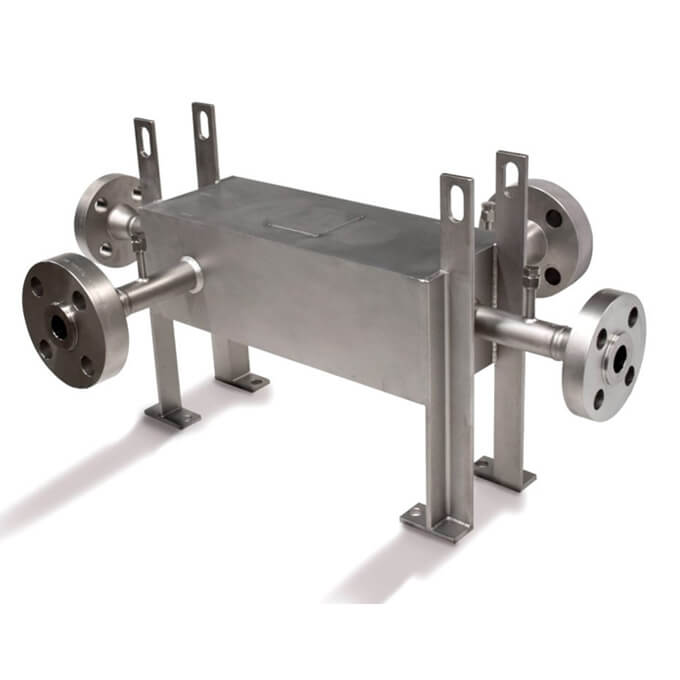Custom Printed Circuit Heat Exchanger
The Custom printed circuit heat exchanger is a type of heat exchanger with high heat exchanger surface density, corrosion resistance, and the ability to operate under pressures of up to several hundred Kg/cm2. The temperature ranges from supercooling to several hundred 0C.
The design of this heat exchanger represents a close combination of advanced manufacturing technologies with very demanding manufacturing standards. This type of heat exchanger has the potential to replace traditional equipment or places where traditional equipment cannot meet.
Some forms of plate heat exchangers, the surface density.

Principle of operation
Custom printed circuit heat exchanger works by using two or more fluids flowing on opposite sides of a welded plate. High pressure flows can be common on both sides and a 2D or 3D plate model can be optimized to offer the required thermal length and pressure differential.
Design Features of Heat Exchanger
The PCB heat exchanger design features a complex flow pattern chemically etched onto plates of flat material. This flow model is optimized on each specific customer need to provide the required thermal and hydraulic characteristics. Each flow circuit plate model can be different, giving the possibility of asymmetrical flows and optimized 2-phase behavior.
The individual plates then stack in a block and joined by a high temperature and pressure diffusion welding process in a state-of-the-art oven. Multiple blocks are easy to weld together to achieve the required heat capacity by custom printed circuit heat exchanger.
With this configuration it is possible to achieve design pressures up to 1000 barg (14,500 psig) in SST 316L. Moreover, the heat exchange surfaces customize according to requirements.
Applications of PCB heat exchangers
PCB heat exchangers are specifically good to deliver unmatched compactness and efficiency in clean, high pressure applications. Furthermore, these are beyond the capability of other welded plate of custom printed circuit heat exchanger. Similarly, the rugged design can reliably handle pressures ranging from vacuum to 1000 barg (14,500 psig).
Typical marine applications include high pressure vaporization in fuel gas fuel systems (FGSS) and LNG regasification on FSRU and SRV ™ vessels. In the energy sector, PCB heat exchangers are common in cryogenic LNG and gas processing applications.
Typically these are offshore gas compression systems and hydrocarbon gas and water condensation systems. In the LNG field, where a high energy recovery desires, custom printed circuit heat exchanger are common in the final exhaust gas and boil-off gas (BOG) management systems.
Working Principle of Custom Printed Circuit Heat Exchanger
Printed circuit heat exchangers operate on the principle of indirect heat exchange between two moving fluids in small ducts. The device constructs of flat alloy plates with the path of the flux lines etched by photochemical engraver onto these metal plates.
Main Components of Heat Exchanger
Like other plate heat exchangers, custom printed circuit heat exchanger consists of the following main components:
- Heat exchanger core;
- Similarly, device case.
- Moreover, heat exchanger core
The heat exchanger core comes up of thin alloy metal plates.
Arrangement of Custom printed circuit heat exchanger
Generally, the special arrangement of the plates allows the plates to bond together. The bond is equivalent in strength to that of the plate heat exchanger. Furthermore, the cross-section of the custom printed circuit heat exchanger core is very important.
Depending on the device capacity, people will weld the heat exchanger core blocks together until the required heat exchange surface reaches.
Special Fluidic Path Machining Method
Generally, thanks to a special fluidic path machining method. In addition, this allows a high degree of flexibility in the power, hydraulic and mechanical design of the equipment because of the cost of changing tooling between different types of construction each other of the exchange plate is very low.
The technique of machining the channels of the fluids on custom printed circuit heat exchanger allows the creation of channels with sizes from 0.5 to 2.0 mm.
A Protective Device cases
Printed-board heat exchanger housings have the simple function of housing the heat exchanger core. Similarly, it protects the internal heat exchanger cores, and provides a fluid distribution head.
The shape of the housing varies depending on the shape of the heat exchanger core and the mechanical construction and application requirements.
Custom printed circuit heat exchanger Scope of Application
Printed board heat exchangers demonstrate advantages when common in high temperature, pressure and corrosive environments.
Generally, as already stated, this type of custom printed circuit heat exchanger has a welded construction. Moreover, the possibility of leakage and problems with the compatibility of the fluid and the device minimize.
These advantages and uniform construction allow the printed-board heat exchanger to operate under extreme temperature, pressure and environmental conditions.
Thanks to its special design and construction, printed-board heat exchangers can be common in a wide range of applications. They can be common for different types of fluids from liquid to gas or two-phase mixtures, layout configurations.

Flow position from one compartment to many compartments, flow direction of fluids from opposite to same direction, cross flow or a combination of custom printed circuit heat exchanger.
Widely Common in Many Industries
Printed board heat exchangers are widely common in many industries. In the oil and gas processing industry it is common as a feed/hot stream heat exchanger (for heat utilization), fuel synthesis, water treatment processes, and other processes. The process of recovering fuel vapor and cooling the compressors in gas conversion technology is simple.
Operation mode
Due to its special construction, the printed circuit board heat exchanger has a very high-pressure resistance. The device can work in standard conditions of 200Kg/cm2 and can completely operate in the pressure range from 300÷500Kg/cm2.
Custom printed circuit heat exchanger can also operate in a very wide temperature range, from supercooling (-200 0 C) up to +900 0 C. The upper limit of temperature depends on the material of manufacture and the pressure device working.
Compare with traditional heat exchanger
With a high heat exchanger surface density printed circuit board heat exchangers are relatively much smaller in size than traditional (beam tube) heat exchangers of equivalent capacity.
Typically, with the same heat exchanger capacity, the heat exchanger core of this device is 5 to 10 times smaller than the tube bundle size of a beam tube of custom printed circuit heat exchanger.




